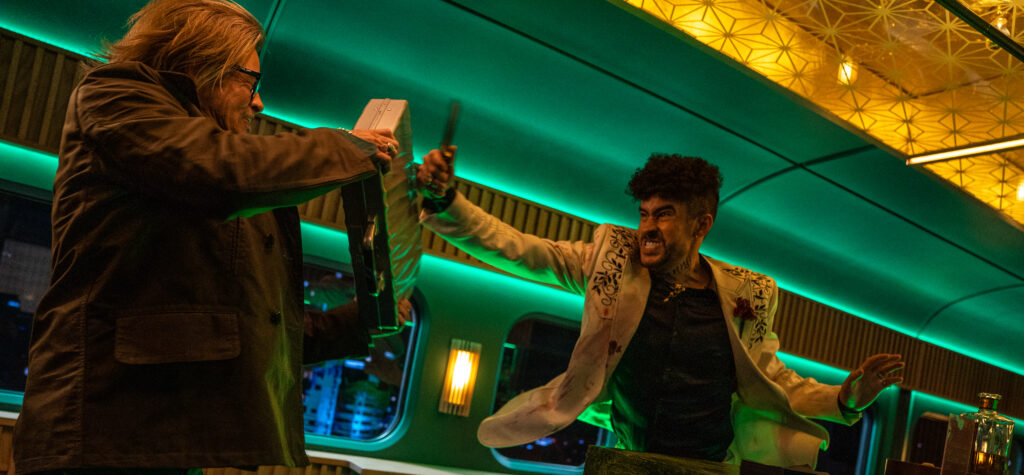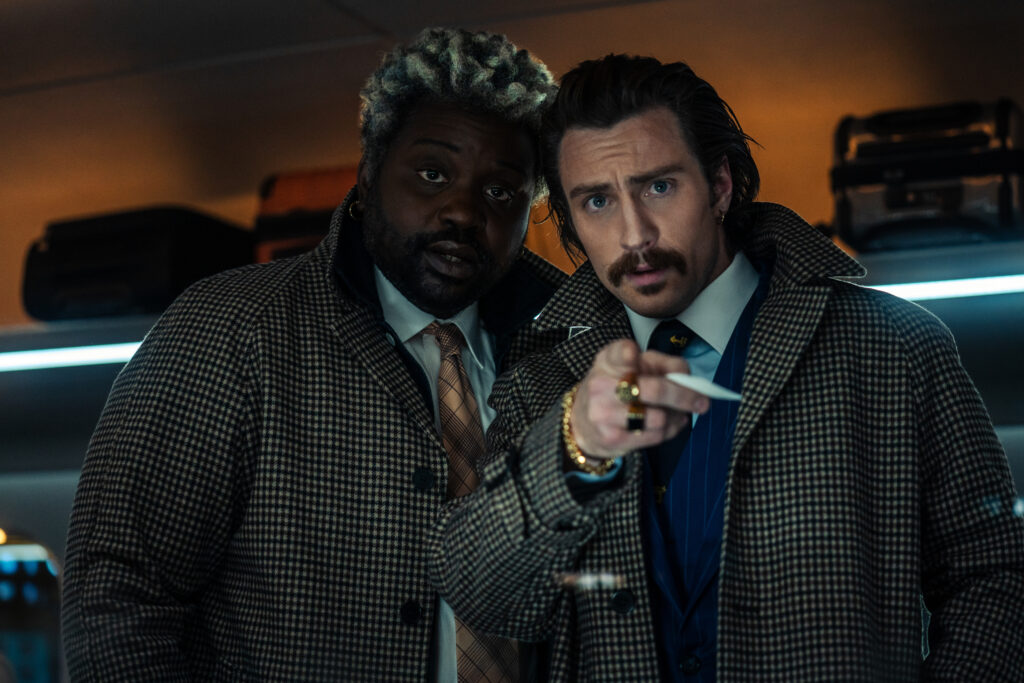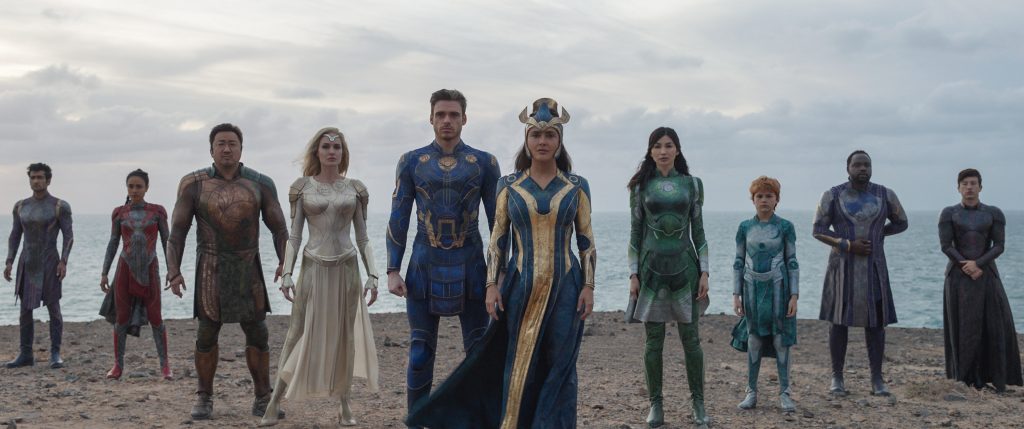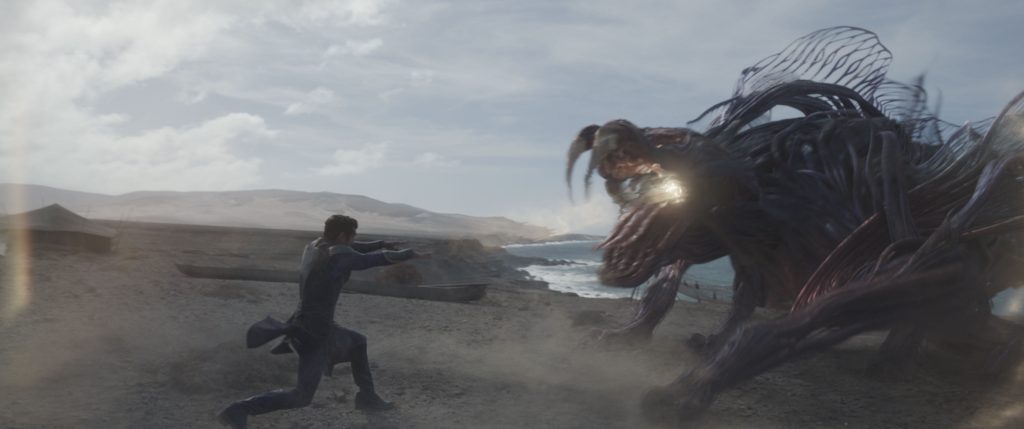March 28, 2024
by Carla Hay
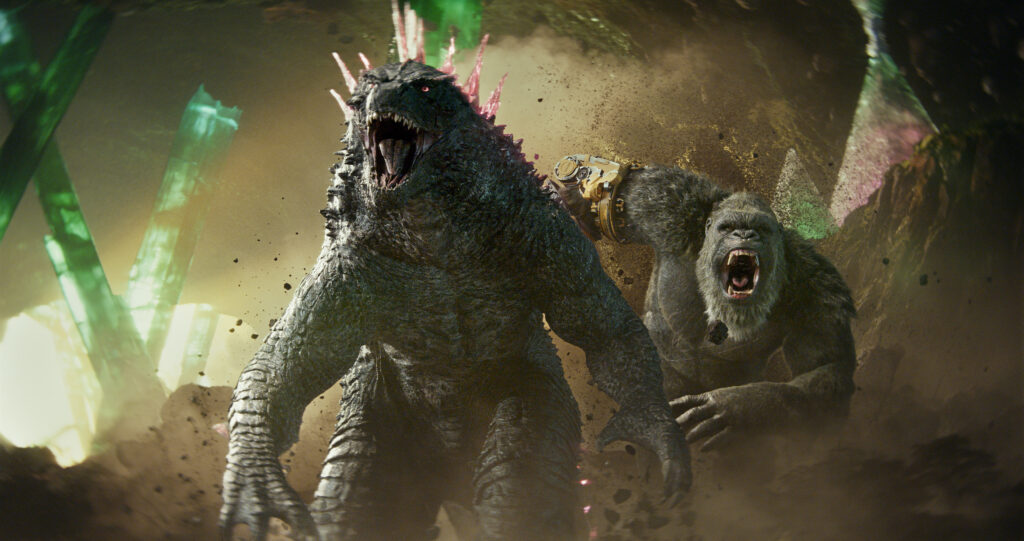
“Godzilla x Kong: The New Empire”
Directed by Adam Wingard
Culture Representation: Taking place in various places on Earth, the sci-fi/fantasy/action film “Godzilla x Kong: The New Empire” features a racially diverse cast of human characters (white, African American and Asian) representing the working-class, middle-class and wealthy, in addition to the movie having fictional animal characters.
Culture Clash: Giant monsters Godzilla and Kong team up to fight a common enemy: a giant ape called Skar King, a brutal ruler of an oppressive society in Hollow Earth.
Culture Audience: “Godzilla x Kong: The New Empire” will appeal primarily to people who are fans of the Godzilla and King Kong franchise and adrenaline-packed and entertaining action movies about giant monsters.

Better and bolder than its predecessor, “Godzilla x Kong: The New Empire” delivers what viewers can expect to see when two titan monsters team up against a common enemy. There are less human characters who are irritating and more spectacular action. Be prepared to wait for the epic showdown scene when Godzilla and Kong finally join forces. The movie builds up to this moment with the right amount of anticipation and suspense. It’s worth the wait.
Directed by Adam Wingard, “Godzilla x Kong: The New Empire” is a direct sequel to 2021’s “Godzilla vs. Kong,” a bombastic action flick that had too many annoying humans and a lot of bad dialogue than significantly lowered the quality of the movie. “Godzilla x Kong: The New Empire” has a new screenwriting team (Terry Rossio, Simon Barrett and Jeremy Slater) that made a huge improvement in the story’s narrative, structure and character development, compared to “Godzilla vs. Kong,” which was directed by Wingard and written by Eric Pearson and Max Borenstein.
In “Godzilla x Kong,” mutant dinosaur Godzilla is living above ground and still causing destruction. One of the intentionally amusing things in the movie is that when Godzilla is in Rome, he sleeps in the Colosseum. There are other world-famous landmarks in the movie that are the settings of some of the movie’s intense action scenes, such as the pyramids in Egypt. The scientists observing Godzilla notice that he has gone to a nuclear power plant to inhale the fumes, as if he’s gearing up for battle.
Meanwhile, giant ape Kong is living in his domain in an area in the middle of the Earth called Hollow Earth. Something seems to be disturbing him too. A signal seems to be interfering with Hollow Earth, which is under the scientific observation of the Monarch Hollow Earth Station in Barbados, as first seen in “Godzilla vs. Kong.” Dr. Ilene Andrews (played by Rebecca Hall) is the lead scientist.
Ilene’s adopted daughter Jia (played by Kaylee Hottle), who happens to be deaf, is mourning the genocide of her indigenous Iwi tribe of people, who worship and are protectors of Kong and others in his species. Later in the movie, an Iwi queen (played by Fala Chen) has some answers to questions about Jia’s heritage and Iwi legacy. Jia is causing concern at her school because she’s been making disturbing drawings in class on pieces of paper and on her desk. Jia tells Ilene, “I think I’m going crazy.” It turns out that Jia has been sensing certain signals that are interfering with Hollow Earth.
Ilene and Jia then go on an expedition to Hollow Earth with wisecracking Monarch veterinarian Trapper (played by Dan Stevens), hot-tempered pilot Mikael (played by Alex Ferns) and talkative podcaster Bernie (played by Brian Tyree Henry), who begs to be taken along for the ride. Ilene and Jia are the most level-headed people in this motley crew. What these expeditioners find in Hollow Earth changes the entire trajectory of the story.
Kong also has a new companion in Hollow Earth: a young monster ape named Suko, who has a child-like personality. Although they both get off to a rough start by clashing with each other, Kong develops a paternal relationship to Suko as they spend more time together, and they protect each other. This movie shows more of Kong’s vulnerable emotions than in “Godzilla vs. Kong.” The performances by the cast members are serviceable. Let’s face it: People see these Godzilla and Kong movies for the monsters more than the humans.
Kong and Suko both come across a formidable enemy: Skar King, an evil giant ape who has enslaved hundreds of other giant apes. Skar King has control of a mutant dinosaur named Shimo with freezing powers. Skar King uses Shimo in battles and to keep the enslaved apes in fear. There’s also a legendary creature from Godzilla lore (hint: the creature is female and has wings) that is also an important part of the story.
“Godzilla x Kong: The New Empire” also has a lot to say about family—whether the family is biological or found—and how being part of a family has a profound effect on the characters in the movie. (There are no mid-credits or end-credits scenes in the film.) The only main drawback to “Godzilla x Kong: The New Empire” is that the visual effects for Suko look too fake. However, the rest of the film is an entertaining ride that has the right blend of relatable emotions and thrilling action for the human and non-human characters.
Warner Bros. Pictures will release “Godzilla x Kong: The New Empire” in U.S. cinemas on March 29, 2024.

